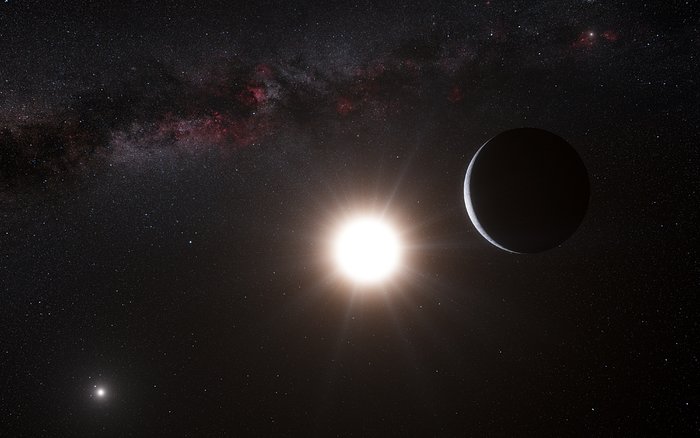
Alpha Centauri: Why Our Neighboring Star System Holds So Much Potential

Project Blue contributed this article to Space.com's Expert Voices: Op-Ed & Insights.
Alpha Centauri is having a moment: Our mysterious neighboring star system has been seeing a surge of scientific interest lately, and for good reason.
Although space researchers have often focused on our own star system, Alpha Centauri has become a more viable option to closely study, and even potentially travel to one day. Our nearest stellar neighbor has received a lot of buzz recently due to the announcement of Breakthrough Starshot, a mission backed by famed cosmologist Stephen Hawking, Russian investor Yuri Milner and Facebook CEO Mark Zuckerberg, with the goal of sending probes to Alpha Centauri someday.
Although it's the closest star system to our sun, Alpha Centauri is still 4.37 light-years (25 trillion miles, or 40 trillion kilometers) away from Earth. Because it's so far away, reaching and studying Alpha Centauri poses significant challenges. But the three-star system — comprising Alpha Centauri A, Alpha Centauri B and a faint red dwarf star Proxima Centauri — also presents enormous opportunities for furthering space research, which is why it is the focus of our mission at Project Blue. [Imaging Planets Around Alpha Centauri Is Aim of New Telescope (Video)]
NASA's Kepler space telescope has found thousands of exoplanets in the universe, many of which orbit in the habitable zones of their stars and could be Earth-like. In fact, one out of every two sun-like stars has a rocky, potentially Earth-like planet in its habitable zone. At Project Blue, we are aiming to actually see one with our own eyes — and take the first photograph of a planet like Earth.
So, why focus on Alpha Centauri? In short, it gives us the best opportunity to accomplish our mission.
A large reason for this is its proximity. After Alpha Centauri, the next-closest sun-like star is 2.5 times farther away and would require a telescope roughly 2.5 times larger in order to be viewed at the same level of detail.
Get the Space.com Newsletter
Breaking space news, the latest updates on rocket launches, skywatching events and more!
The system also has a unique binary structure: It contains not just one, but two stars similar to the sun, doubling our chances of finding planets in either of their habitable zones. In fact, that gives us an estimated 85 percent probability that the Alpha Centauri system harbors at least one potentially habitable planet. However, although the binary structure increases our odds, it also presents challenges. In order to take the photograph, we have to use a specialized system to efficiently suppress the light of two stars to see any potential surrounding planets.

Finally, the last reason our focus remains on our neighboring star system is that Alpha Centauri A is a yellow "G2"-type star that has a temperature and color that closely match the sun's, thus increasing the chances of the existence of an Earth-like planet. Alpha Centauri B, which is a bit cooler and redder than our sun, is also still a good candidate to host a rocky planet like Earth.
The image we hope to take would reveal whether the planet appears blue, as Earth does from space, which could suggest that it hosts liquid oceans or a substantial atmosphere — and, therefore, the potential to support life.
Our chances of spotting a planet successfully are high in Alpha Centauri. This is only underscored by the discovery of an Earth-like planet in the star system earlier this year. Scientists have located the planet Proxima b, with a minimum mass 1.3 times that of Earth, orbiting in the habitable zone of its star, Proxima Centauri.
This recent discovery is indeed exciting, and it sparked Breakthrough Starshot to announce that it will focus on the potential to travel to Proxima b one day, once the technology is developed. However, the planet is not a good option for Project Blue. Because Proxima b orbits so closely to its small, dim star, it would be extremely difficult to image with a telescope, and as such, our focus remains on the larger stars Alpha Centauri A and B.
Alpha Centauri's potential is exciting to not only the science community but the future of humanity, and it's clear that it will provide us with some of our most exciting space discoveries in the years to come.
Follow us @Spacedotcom, Facebook and Google+. Original article on Space.com.
Join our Space Forums to keep talking space on the latest missions, night sky and more! And if you have a news tip, correction or comment, let us know at: community@space.com.









